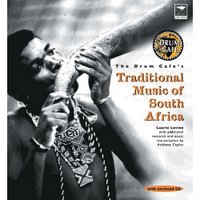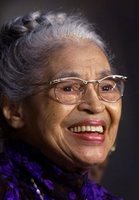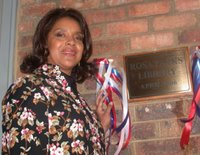
A few weeks before Christmas, Colleen talked me into swimming the Midmar Mile. The Web site (
http://www.midmarmile.co.za/) identifies it as the world’s largest open-water race. These days, I seem to need some serious motivation to get exercise, so I thought this would be perfect. I had already joined the Virgin Active gym in October (part of British entrepreneur/showman Richard Branson’s empire), and had been working out with some regularity. So, from a fitness standpoint, I wasn’t starting from scratch. The days before the holidays were hectic, so Col and I weren’t able to swim together much, but we each managed to get some time in the pool, and I was able to swim a couple of times while I was home in Tennessee. After Christmas, we managed to get together a few times for practice. Some days I would want to swim less, and some days Colleen would want to swim less, so it was good that we could encourage each other to carry on.
The race is held in the Midmar Dam (they use dam to refer to both the structure and the lake created by the structure), which is about an hour northwest of Durban, in the KwaZulu-Natal province. Ralph is not a swimmer and decided not to join us for the weekend, so Colleen, Brody (their 2 year old) and I drove down on the evening of Thursday, 9th February. We stayed in a Durban suburb, called Botha’s Hill, with a friend of Colleen’s. Shona and Colleen met when both their husbands were working in Lagos, Nigeria. Shona and Charles now live in Jakarta, Indonesia, but Shona comes home every 8 weeks or so, and we caught her on the tail-end of a visit.
This visit, in itself, made for a very pleasant weekend, indeed. Shona and Charles have had some financial ups and downs, but I think they are currently in a very nice upswell. The original part of the house was built 100 years ago, but they’ve added on substantially. The current project was to convert the huge verandah on the back of the house into a huge kitchen/dining room/lounge area. Two of the walls are solid windows, a very unique kind of thing I hadn’t seen before. They are floor to ceiling panels; when you open the end panel, you can then slide the next one down to it, and fold it back. And so on with each successive panel. So, the whole room can be open as if it were still a verandah. The kitchen is very deluxe, and the whole thing is such a pleasant room. The work was just finishing up when we were there, so we spent some time helping Shona, her daughter Caitlin, and her housekeeper unpacking boxes of dishes, washing, polishing silver, etc. We had hoped to go to the beach at least one day while we were down there, but the weather wasn’t very good. But Shona’s house was so pleasant that it was okay by me just to laze around, reading, napping, drinking tea, and polishing silver. It also introduced me to a lifestyle (big house, lovely grounds, swimming pool, live-in staff, etc.) that I hadn’t seen yet.
The race was on Sunday morning, and we got a late start leaving Shona’s. We also underestimated the crowd and attendant traffic! Plus, we found out from friends later that we should have received an information packet in the mail that would have given us parking and shuttle instructions. But we didn’t have that in hand, and since neither of us had been there before, we bumbled around trying to decide where best to park, how to get the shuttle to the other side of the lake, etc. By the time we finally ended up at the registration point, Colleen just had time to thrust Brody into the arms of her friend Rene, who had agreed to keep him while we swam, and we rushed to the starting point. If you see her, ask Colleen what else she did not have time to do beforehand, which proved to be quite uncomfortable for her.
The race is separated into age and gender groups, but even then, because there are so many participants, the start times are staggered. If you have never swum in the Midmar Mile and you did not participate in a seeding event, then you are given a white swim cap and you are in the last group to start (for your age and gender). This identifies you as a “Midmar virgin.” Because Colleen and I had done a seeding event (the 1K race in Germiston in January), and based on our times in that event, we were given yellow caps. I think, though I’m not sure, that there were two groups before us. Red and either blue or green, I forget. So, for the 31+ and under 13 women (yes, us oldies were swimming with the youngsters), the red caps started at 8.30 a.m. There was a delay of 6 or 7 minutes (I couldn’t always hear the announcer), then the next group, 6 or 7 minutes, then the next group, and so on.
One nice thing about this race is that it is a straight shot. You swim from one side of the lake to the other, within a lane that is marked by buoys along the way. The race in Germiston was like a big triangle. Swim a few hundred meters to the first buoy, around it and to the next buoy, around it and to the finish. Midmar is easier. One not so nice thing about it is that because it’s such a big lake, there’s a likelihood of bigger waves in the event of bad weather. When we started out, it was cloudy but calm. Sometime during the race, though, it started to rain and the wind picked up. Fortunately, that lasted only for a few minutes.
There are small boats and lifeguards on surfboards all along the route, so if anyone gets into trouble during the race, someone can quickly paddle over and give assistance. I don’t know if this happened during our race. I was worried about how young some of the girls were, but they seemed to do just fine!
Colleen’s biggest problem during swim races is that she gets bored. My biggest problem is that I get frustrated with all the bodies around me. The beginning of the race is particularly crowded, but then it thins out. At one point, though, I got stuck in a gaggle of 5 or 6 youngsters, and couldn’t seem to get around them or power through them. Finally, I just slowed down a lot, let them pass, then changed my course around them.
As you finish the race and exit the water, there are volunteers who hand you a medal (everyone gets one), and a timekeeper who is calling out times. There are also photographers, and you can later find your photo on the Web site and place an order, if you wish. Then you have to walk through a throng of onlookers, most of whom are seeking their friends or family members who were swimming. I managed to find Rene and Brody. I was astonished to discover that I finished before Colleen. I am a good swimmer, but she does triathlons and is just much more fit than I. She’s also only 35!
Here are our results. If you want to view the file yourself, go to
http://www.midmarmile.co.za/Catergory%20Results.htm, scroll down to Event 5, combined results.
My final time was 38:23. My position was 854, my category position (female 41-50) was 124, and my gender position was 828.
Colleen had a final time of 39:01, position 903, category position (female 31-40) 196, and gender position 877.
This past Sunday (19th Feb) we swam in a 1K race in Midrand (between Jo’burg and Pretoria). Colleen finished before I did again (as she did in Germiston), and we each imporoved our times for the 1K. Then we came back to Jo’burg, showered, collected Ralph and Brody, and had a nice Sunday brunch at Betty’s restaurant, near their house. There’s another race in March, but I won’t be able to compete in that one because it’s while Dad will be here for a visit, and we’ll be in Nelspruit that weekend. Maybe Col and I can find one for April. I want to continue competing, because it gives me motivation to stay in the pool!
Cheers, everyone!
 Cape Point, where the Atlantic and Indian Oceans meet.
Cape Point, where the Atlantic and Indian Oceans meet. Funny sign at the jackass penguin colony near Simon's Town.
Funny sign at the jackass penguin colony near Simon's Town.








